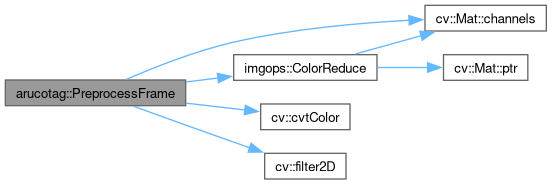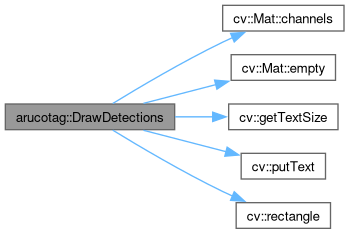Detect ArUco tags in the provided image.
Create instance variables.
94 {
96 std::vector<int> vIDs;
97 std::vector<std::vector<cv::Point2f>> cvMarkerCorners, cvRejectedCandidates;
98
99
100 cvArucoDetector.
detectMarkers(cvFrame, cvMarkerCorners, vIDs, cvRejectedCandidates);
101
102
103 std::vector<tagdetectutils::ArucoTag> vDetectedTags;
104 vDetectedTags.reserve(vIDs.size());
105
106
107 for (long unsigned int unIter = 0; unIter < vIDs.size(); unIter++)
108 {
109
111 stDetectedTag.nID = vIDs[unIter];
112
113 stDetectedTag.pBoundingBox = std::make_shared<cv::Rect2d>(
cv::boundingRect(cvMarkerCorners[unIter]));
114 stDetectedTag.eDetectionMethod = tagdetectutils::TagDetectionMethod::eOpenCV;
115 stDetectedTag.szClassName = "OpenCVTag";
116 stDetectedTag.cvImageResolution = cvFrame.
size();
117
118
119 vDetectedTags.push_back(stDetectedTag);
120 }
121
122
123 return vDetectedTags;
124 }
void detectMarkers(InputArray image, OutputArrayOfArrays corners, OutputArray ids, OutputArrayOfArrays rejectedImgPoints=noArray()) const
Rect boundingRect(InputArray array)
Represents a single ArUco tag. Combines attributes from TorchTag, TensorflowTag, and the original Aru...
Definition TagDetectionUtilty.hpp:59





